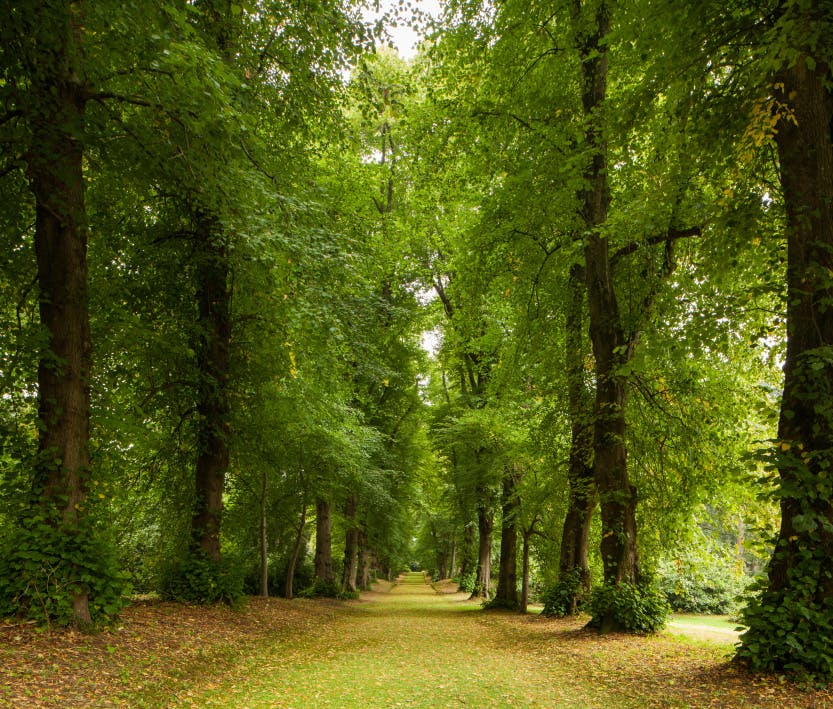Celebrating Hillsborough Castle's Moss Walk
Date: 09 March 2020
Author: Claire Woods
Although moss gardens are a relatively common sight in Japan there are very few in the UK and Ireland. So it's special for us that one of the best examples in Northern Ireland is at Hillsborough Castle and Gardens! Gardens Manager Claire Woods introduces Hillsborough's Moss Walk.
Under the lime trees leading up to Lady Alice's Temple within the grounds of the Castle, a path of moss stretches for nearly 200 metres. This spongy green carpet has developed so successfully here simply because all the necessary conditions are present. Moss requires plenty of moisture, and this relatively flat area ensures water doesn't runoff, but sinks into the soil or evaporates, keeping the air humid. Water drips down from the overhanging trees above, which also provide much-needed shade during rare moments of sunshine!
Mosses are classified as 'byrophytes': primeval plants that have been growing on earth for some 450 million years. There are 797 recognised distinct species of bryophyte found in the UK and Ireland, although many of these require microscope analysis to distinguish them from similar species. Distinctive from flowering plants because they produce spores (single-celled reproductive units), bryophytes have stems and leaves, but no proper roots, and no internal vascular (the 'plumbing system' present in flowering plants to connect their leaves to their roots). They are therefore reliant on consistent damp conditions for reproduction, as the male cells need to move via a film of water to reach the female cells for fertilisation.
As they're often the first lifeform to colonise bare ground, mosses serve an important role ecologically. They control erosion, and absorb huge quantities of water, helping to soak up rainfall and create a locally humid environment which in turn supports the development of other plant life. They act as an important home for other creatures too, including a host of microscopic creatures and invertebrate species like slugs and woodlice. This is something larger creatures seem to have cottoned on to - every spring our Moss Walk gets pulled up by birds looking for a tasty meal underneath!
Gardeners tend to think of moss as a problem, but when they actually have much to offer a garden: mosses stay green all year round, and will grow happily where grass can't survive. They're easy to take care of, too: they don't die if they go without moisture, they require no digging, mowing or raking, and can tolerate a wide range of pH. In short, moss is the ultimate low maintenance plant!
Claire Woods
Garden Manager Hillsborough Castle and Gardens
More from our blog

Royal Trees at Hillsborough Castle and Gardens
31 May 2023
Claire Woods, Gardens Manager at Hillsborough Castle and Gardens, reflects on some of the trees planted by members of the Royal Family, which are still available to view in the castle grounds today, and the newest addition for 2023.

Preparing the Peace
10 April 2023
Reflecting on Hillsborough Castle’s political role, 25 years on from the Good Friday Agreement.

The Real Norman Hartnell: Beyond 'Silver and Gold'
25 February 2022
February is LGBT+ History Month in the UK, which aims to increase the visibility of lesbian, gay, bisexual and trans (LGBT+) people through the exploration of their history and stories. Collections Curator Matthew Storey looks at one such story.


